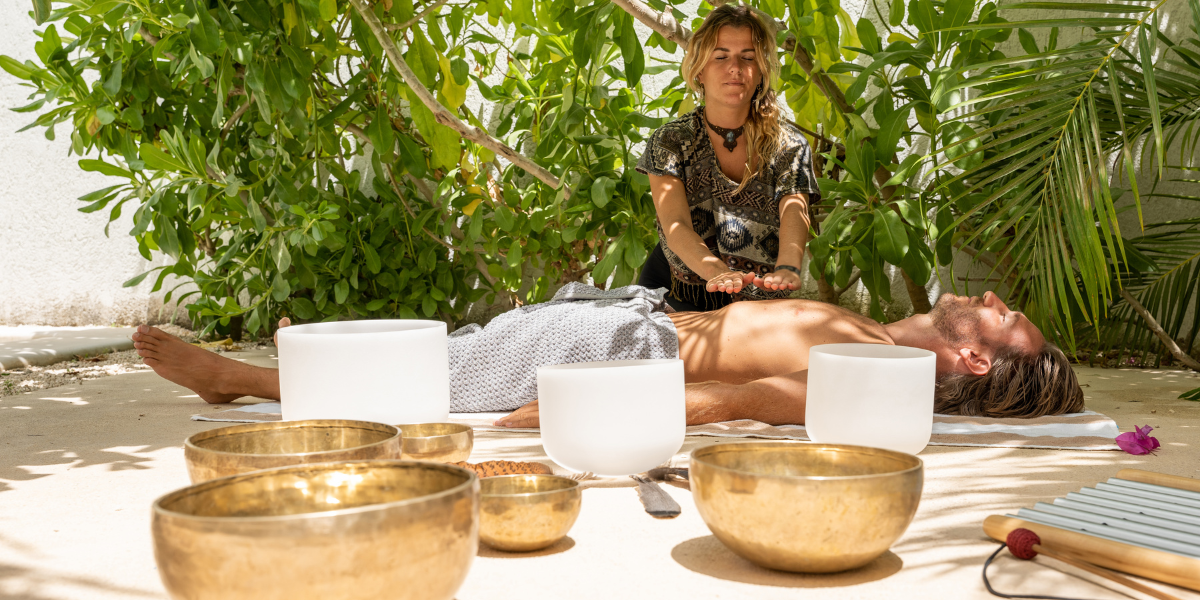Introduction to Holistic Fitness:
Holistic fitness transcends the conventional notion of exercise as a mere physical activity; it is an integrated approach that harmonizes the body, mind, and emotions for comprehensive well-being. This concept recognizes that true health extends beyond the physical realm, acknowledging the interconnectedness of our mental and emotional states with our physical vitality.
In embracing holistic fitness, we embark on a journey that values mindfulness, self-awareness, and balance. It involves not only the pursuit of physical strength but also the cultivation of mental clarity and emotional resilience. Holistic fitness encourages us to view our well-being as a unified whole, where physical health, mental acuity, and emotional equilibrium coalesce to create a state of optimal vitality and fulfillment.
Table of Contents

Yoga for Mind-Body Connection:
Yoga stands as a profound practice that extends far beyond its physical postures. By seamlessly combining breath, movement, and mindfulness, yoga becomes a conduit for cultivating a profound mind-body connection. The benefits are multi-faceted; firstly, yoga enhances flexibility and strength, promoting a balanced and resilient physical body. This harmonious movement is complemented by an increased mental clarity, as practitioners learn to synchronize breath with movement, fostering a focused and calm mind. Yet, perhaps most significantly, yoga transcends the realm of mere exercise, encouraging a profound connection between the body and mind. Through intentional postures and mindful breathing, practitioners embark on a journey of self-discovery, fostering holistic well-being that extends far beyond the mat.

Tai Chi for Balance and Flow:
Tai Chi, an ancient Chinese martial art, transcends its traditional roots to become a therapeutic practice celebrated for its holistic benefits. Rooted in the principles of balance, fluidity, and mindfulness, Tai Chi serves as a gentle yet powerful means to enhance the mind-body connection. The slow, deliberate movements, combined with focused breathwork, promote physical balance, improve coordination, and foster a sense of flow within the body. Emphasizing precision and intentionality in each movement, Tai Chi becomes a moving meditation that not only strengthens the body but also reduces stress. This harmonious synchronization of breath, movement, and mental focus creates a profound mind-body experience, offering practitioners a serene path toward overall well-being.

Mindful Movement Practices:
In the realm of holistic fitness, mindful movement practices like Qigong and Feldenkrais offer unique pathways to cultivate a heightened awareness of the body and mind. Qigong, rooted in traditional Chinese medicine, emphasizes slow, flowing movements coordinated with deep breathing to promote energy flow and enhance body awareness. Similarly, Feldenkrais, a somatic education method, focuses on gentle, exploratory movements to improve posture, flexibility, and coordination. These practices go beyond traditional exercise, encouraging individuals to move with intention and presence. By incorporating mindful movement into daily life, individuals can elevate their consciousness during routine activities, transforming simple motions into opportunities for heightened awareness and improved overall well-being.

Outdoor Fitness and Nature Connection:
Engaging in outdoor fitness activities not only invigorates the body but also nurtures a profound connection with nature, fostering holistic well-being. Whether through hiking, trail running, or outdoor yoga, these activities immerse individuals in the natural world, providing a therapeutic escape from the confines of indoor spaces. The benefits are manifold – exposure to fresh air and natural scenery rejuvenates the senses, while the varied terrain challenges the body in ways that traditional gym settings often cannot. Beyond physical fitness, spending time outdoors has been linked to reduced stress, improved mood, and enhanced cognitive function. The symbiotic relationship between outdoor fitness and nature connection creates a harmonious blend that promotes both physical and mental well-being, enriching the overall holistic experience.

Holistic Nutrition for Vitality:
Holistic nutrition transcends the mere consumption of calories; it embraces a philosophy that nourishes the entire being. Emphasizing whole foods as the cornerstone, holistic nutrition recognizes the profound impact of mindful eating on overall health and fitness. Whole foods, rich in essential nutrients, not only fuel the body but also contribute to its resilience and vitality. The practice of mindful eating encourages individuals to cultivate a deeper connection with their food, savoring each bite, and fostering a conscious awareness of nutritional choices. By understanding the interconnectedness of nutrition, well-being, and fitness, holistic nutrition becomes a lifestyle approach that not only supports physical health but also nurtures a harmonious balance between the body and mind.

Mental Fitness and Cognitive Well-Being:
In the realm of holistic fitness, mental well-being is paramount. Mental fitness extends beyond the traditional notions of physical exercise; it involves practices that cultivate a resilient mind and emotional equilibrium. Incorporating meditation, mindfulness, and cognitive exercises becomes essential in this holistic approach. Meditation serves as a powerful tool to quiet the mind, fostering clarity and emotional resilience. Mindfulness, practiced in daily activities, brings attention to the present moment, reducing stress and enhancing cognitive function. Cognitive exercises, such as puzzles or memory games, challenge the brain and contribute to cognitive longevity. The synthesis of these practices creates a robust foundation for mental fitness, emphasizing the integral role of a healthy mind in achieving holistic well-being.

Restorative Practices for Recovery:
In the fast-paced rhythm of modern life, integrating restorative practices into holistic fitness routines is crucial for achieving optimal well-being. Practices such as meditation, deep breathing, and gentle stretching play a pivotal role in promoting recovery by reducing stress and fostering relaxation. Meditation serves as a mental reset, calming the mind and allowing for a deep sense of inner peace. Deep breathing techniques, like diaphragmatic breathing, facilitate the release of tension and promote a state of physiological calm. Gentle stretching exercises, such as those found in restorative yoga, encourage physical recovery by alleviating muscle tension and promoting flexibility. Together, these restorative practices create a sanctuary for the body and mind, supporting holistic recovery and rejuvenation.

Community and Social Well-Being:
Holistic fitness extends beyond individual endeavors, emphasizing the profound impact of community engagement on overall well-being. Participating in group activities, classes, or social events not only enhances physical fitness but also contributes to a profound sense of belonging and support. The camaraderie built within a community fosters motivation, accountability, and a shared journey toward holistic well-being. Whether it’s joining a fitness class, a running group, or a yoga community, the social connections formed become pillars of support, encouraging individuals to persist in their wellness journey. The shared experiences within a community create a supportive network that transcends physical fitness, nurturing emotional and mental well-being, and fostering a holistic approach to health.

Personalized Holistic Fitness Plans:
Recognizing the uniqueness of each individual, the essence of holistic fitness lies in the customization of wellness routines. Encouraging individuals to tailor their fitness plans to personal preferences becomes pivotal in achieving a truly holistic approach. This involves incorporating a diverse mix of activities that align with not only physical fitness goals but also mental and emotional well-being aspirations. Whether it’s the meditative flow of yoga, the dynamic energy of outdoor activities, or the grounding practice of mindful movement, personalization ensures that fitness becomes a source of joy, not just a routine. By weaving together activities that resonate with an individual’s holistic goals, a personalized fitness plan transforms wellness into a sustainable, enjoyable, and encompassing journey towards optimal well-being.

Conclusion:
In the pursuit of holistic fitness, we’ve embarked on a journey that transcends the conventional boundaries of physical exercise. Holistic fitness invites us to recognize the intricate interplay between the body, mind, and emotions, emphasizing that true well-being extends beyond the mere physical realm.
From the mindful movements of yoga and the flowing grace of Tai Chi to the serenity found in nature and the nourishment of holistic nutrition, each facet contributes to a harmonious symphony of holistic wellness. The mental fortitude cultivated through practices like meditation and the importance of restorative approaches underscore the understanding that true fitness encompasses a balanced mind as much as a strong body.
Engaging in community and personalized fitness plans completes the narrative, reminding us that our well-being is not a solitary endeavor. It is a shared experience, a journey of self-discovery, and a celebration of our unique, holistic selves.
As we conclude this exploration, let us carry the essence of holistic fitness into our lives. May our movements be mindful, our nutrition be nurturing, and our communities be supportive. For in the tapestry of holistic fitness, we find not just physical vitality, but a profound sense of balance, purpose, and well-being that permeates every facet of our existence.


